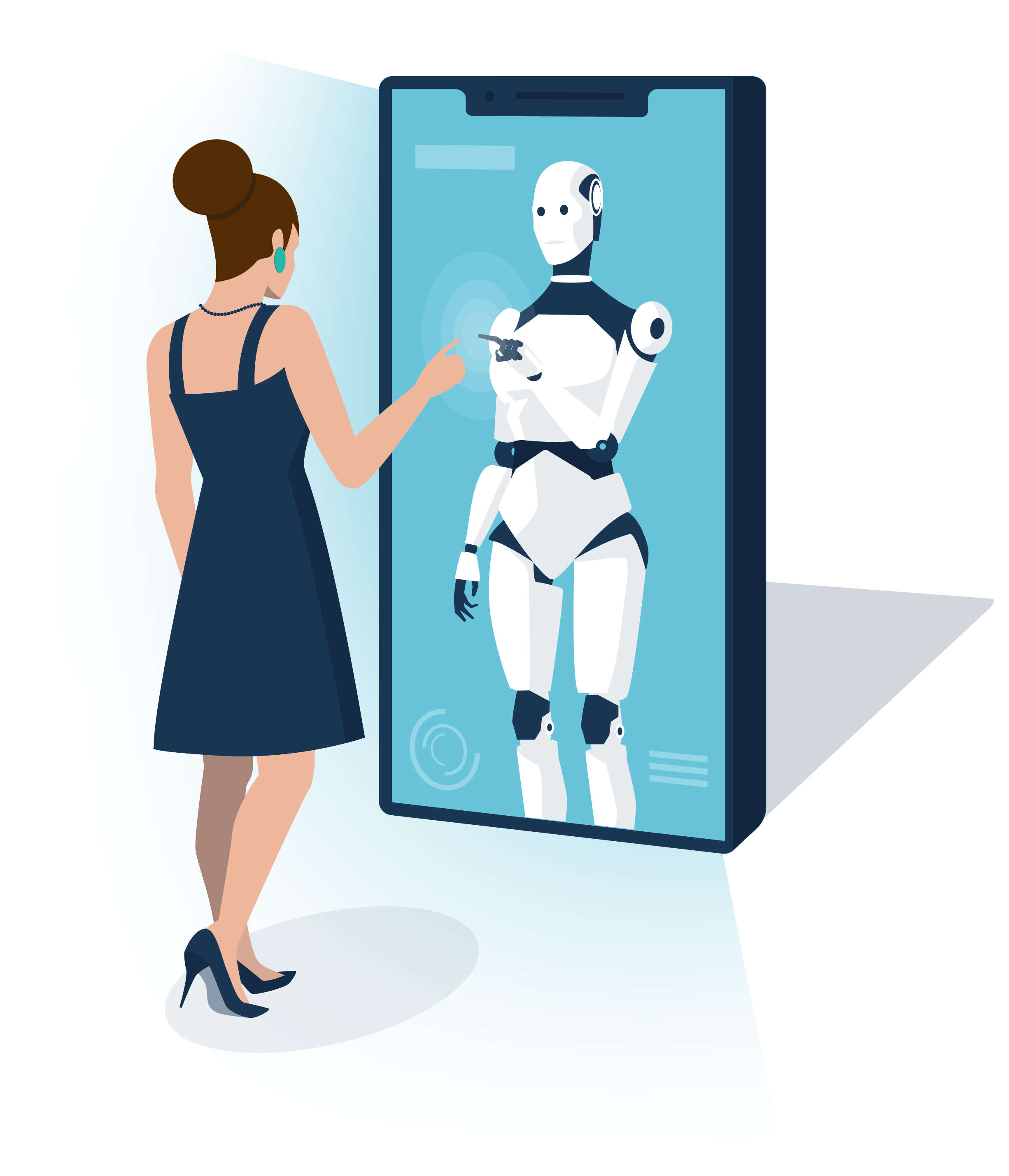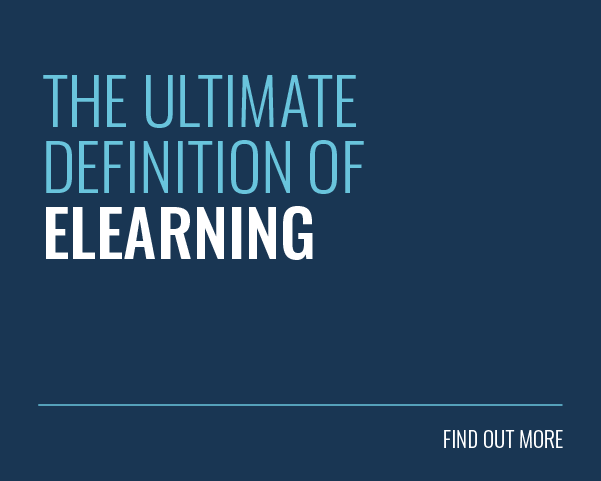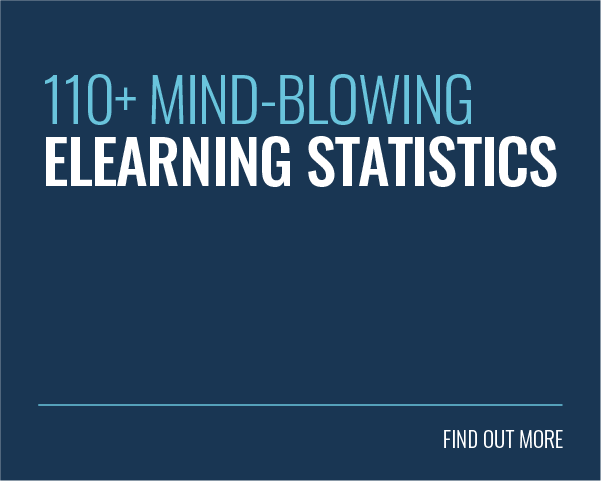 Scenario-based learning is a powerful and engaging instructional strategy. That’s why it has been subject to increased attention in recent years.
Scenario-based learning is a powerful and engaging instructional strategy. That’s why it has been subject to increased attention in recent years.
Scenario-based training programmes come in many shapes and sizes. Some build their whole approach around these immersive training events, while others incorporate it as part of a much wider and more varied experience.
After all, scenario-based learning helps you to overcome one of the biggest training challenges: knowledge retention. It does this while encouraging active learning and engaging learners. As such, the possibilities are endless.
In this article, we will look at the approach more in-depth, explore the benefits and review some of the common use cases of scenarios in learning and development.
What Is Scenario-Based Learning?
Scenario-based learning (SBL) is an active learning strategy that uses interactive scenarios. With this approach, learners work their way through a storyline that promotes problem-solving and critical thinking.
Learners make choices based on their subject knowledge and problem-solving skills. The activity then provides immediate feedback based on the decisions learners make during the scenario.
This makes scenario-based learning an active and immersive learning method. In fact, it’s vastly different from traditional training, which is typically a passive experience. In passive training, learners observe information without first-hand involvement.
Scenarios can be extremely useful on their own, but you can also use SBL as a part of a larger assignment. For example, you could ask your learners to provide a written or oral reflection and self-assessment of their performance after completing the scenario.
Scenario-based learning typically uses realistic situations as an example. As such, SBL provides a highly relatable, relevant and autonomous learning experience for your learners. Similarly, the immersive approach makes training more fun and engaging.
Offline Vs Online Scenario-Based Learning

Scenario-based learning can be used effectively in both online and offline training. The only difference is how it is implemented into your training programme.
In traditional face-to-face training, scenario-based learning is typically delivered through in-person simulations, role-playing exercises, or interactive group activities. As such, your learners physically engage with the scenario.
In turn, in online training, you can deliver scenario-based learning through a variety of digital platforms or tools. This means your learners do not have to go into a physical location to engage in their scenarios.
Choosing between online or offline scenario-based learning depends heavily on the nature of your wider training programme.
Different Types of Scenarios
There are several different types of scenarios that you can use to provide effective scenario-based learning. These include, for instance:
- Decision-making scenarios: These types of scenarios present your learners with a situation and ask them to make a decision or solve a problem based on the information you have provided.
- Interactive scenarios: Interactive scenarios allow your learners to interact with the scenario itself. Learners typically do this by clicking on different elements to see how their decisions affect the outcome.
- Branching scenarios: Branching scenarios provide your learners with multiple paths they can take depending on their choices. This means that each scenario has a variety of potential outcomes.
- Story-based scenarios: Story-based scenarios use narrative to engage your learners and create a more immersive experience. This helps them to connect emotionally with their training content.
- Simulation scenarios: Simulations allow learners to practise skills and tasks in a simulated environment. This typically happens through immersive technology or a computer programme.
- Game-based scenarios: Game-based scenarios use gamification elements, such as Experience Points, Rewards, and Leaderboards, to engage learners and make the learning experience more enjoyable.
The best type of scenario for you will depend on your learning objectives and learners. Similarly, some of these scenarios require more resources and are better suited for specific types of content.
The Benefits of Scenario-Based Learning
1. Provides a Safe Space to Learn and Fail
Scenario-based learning creates a realistic learning experience. As such, scenario-based training allows learners to improve their skills in a safe and supportive space.
This is especially useful if your learners are expected to perform potentially risky activities. In fact, scenarios allow learners to learn in a low-stakes environment that minimises the risk of real-life errors that could be dangerous or costly.
This explains why the earliest applications of simulation-based learning emerged from the aviation and medical industries. After all, the cost of human error is very high in both these areas.
2. It’s Interesting and Engaging

Scenario-based learning is an interactive and engaging learning strategy. After all, it presents your learners with realistic and relevant situations that they can relate to.
It’s also an innovative and fun way to explore new information. For instance, a study found that student engagement and satisfaction were 90% when using scenario-based learning.
In addition, scenario-based learning provides your learners with immediate feedback on their decisions and actions. This allows them to learn from their mistakes and make better decisions in the future.
As a result, your learners will be more motivated to continue their learning journey as they can see the practical value of their training. This is extremely useful, as answering the WIIFM (‘What’s in it for me?’) question is an excellent way to boost motivation. After all, no one wants to complete unnecessary training.
3. Soft Skills Training
Scenario-based learning helps your learners to develop their skills in more ways than one. Even if you’re focused on helping your learners to build their compliance or regulatory knowledge, they can still gain other invaluable skills in the process.
In fact, scenarios are designed to present your learners with challenges that require them to analyse, evaluate, and make decisions. This helps them to develop critical thinking and problem-solving skills that are essential in many professions.
As such, scenario-based training sets multiple cognitive processes into action. This active approach provides more opportunities for your learners to learn and pick up transferable skills.
4. Better Knowledge Retention
Scenario-based learning is an immersive and autonomous experience. Learners see how their choices influence the scenario. As such, each choice and consequence becomes a microlearning opportunity.
When learners participate in a scenario, they become active participants rather than passive observers. This is extremely useful, as according to the 70:20:10 model, 70% of learning happens through experience.
These realistic and relevant situations help to make the learning experience more memorable. Experiential application also means that your learners will be better able to connect new information to their existing knowledge and recall it more readily.
In addition, as explored, scenario-based learning provides immediate feedback to your learners. This feedback loop enables them to learn from their mistakes and reinforces the learning process.
5. Flexible Training Approach
You can apply scenario-based learning to most of your corporate training needs. In fact, it’s an extremely flexible approach to learning and development.
You can also customise each scenario to meet the specific needs and objectives of your individual learners. This ensures your scenarios are relevant and beneficial for different learners in your audience.
In addition, scenario-based learning is flexible in terms of timing and scheduling. If you have an online solution, then your learners can access scenarios at any time, from anywhere, as long as they have an internet connection.
Similarly, scenario-based learning is flexible in terms of pace, as learners can work through scenarios at their own speed. As such, your learners can fit their training in around other commitments and responsibilities.
Different Use Cases for Scenario-Based Learning
As mentioned, scenario-based learning can be used in a wide range of contexts. Let’s explore some examples of where SBL can be an extremely useful part of your training programme:
1. Compliance Training
Compliance training plays a critical part in any organisational learning effort. It’s essential to ensure that your employees understand and adhere to laws, regulations, and policies. However, it’s typically seen as one of the less engaging topics to learn about.
Luckily, scenario-based learning can be an effective way to train your employees on important regulations and policies. After all, you can create scenarios that simulate common compliance violations and their consequences, such as insider trading or harassment.
As a result, learners can see the consequences of their misconduct straight away and in a safe environment. In this way, scenario-based learning can help you to improve employee behaviour and reduce the risk of legal issues for your organisation.
2. Sales Training
Scenario-based learning can be an effective way to train your employees on sales skills, such as prospecting, negotiating, and closing deals. Realistic sales scenarios help your learners to apply their knowledge and skills in a way that meets the needs of your potential customers.
As such, you could use scenarios to simulate situations where learners can practise identifying customer needs, handling objections and closing deals. The immediate feedback and guidance offered will allow your learners to learn from their mistakes and improve their sales techniques.
Another benefit of scenario-based learning for sales training is that you can easily customise it to meet the specific needs of different sales teams. After all, different organisations have vastly different target customers and sales strategies.
3. Health & Safety Training
In the UK alone, there are over 100 fatal injuries at work each year. In addition, 36.8 million working days were lost because of work-related injuries or ill health between 2021 and 2022.
With this in mind, health and safety training is clearly essential. The results of getting it wrong could be serious. Thankfully, scenarios provide a safe way to improve your teams’ skills and knowledge.
For instance, you could create scenarios that simulate common workplace hazards, such as slips, trips, and falls or handling hazardous substances. Similarly, you could focus on potential mental issues and challenges.
By using scenarios, you can ensure that your learners are adequately prepared to handle a variety of difficult situations and understand how to respond appropriately. After all, they can learn from their mistakes without any real-world consequences.
4. Communication Skills Training
For years, communication has been ranked as one of the top soft skills to have. And it makes sense! Communication skills help you to express yourself accurately and understand the people you interact with at work.
Scenario-based training is an excellent way to improve communication. In fact, it’s a natural fit for any type of interpersonal skills training.

After all, scenarios can easily and effectively imitate any form of dialogue or conversation. This could range from sales and customer service dialogue, communication between doctors and their patients or managers and their teams. As a result, learners will naturally improve their communication skills during the process.
However, you can also focus solely on communication as the topic of your training. Dialogue-driven role-play helps your learners to understand, for example, effective communication approaches amongst different audiences.
5. Critical Thinking Skills Training
According to a report by McKinsey, critical thinking is one of the top skills that employers look for in new hires. After all, this helps them to future-proof their organisations.
Similar to communication skills, you can use scenario-based learning to improve your learners’ critical thinking skills. This approach will naturally improve this skill as your learners need to think carefully about the consequences of the choices they make.
You can design scenarios to present complex problems or challenges that require learners to analyse data, identify patterns, and apply problem-solving strategies to find solutions.
By practising these skills in a simulated environment, your learners can develop their ability to approach problems logically and creatively.
6. High-Risk Task Training
As we have explored, scenarios create a low-risk learning environment. This makes scenario-based learning a useful approach for practising high-risk tasks.
Scenario-based learning is a handy approach for jobs that necessitate some element of risk. This includes, for example, the military, police, pilots and surgeons. After all, a mistake in these professions can cost human lives. This means that practising tasks may be difficult or dangerous.
As such, you should create scenarios that simulate high-risk tasks, such as defusing a bomb or performing surgery. You can add a layer of realism to your scenarios and create a more authentic experience by using tools like VR or serious games.
7. Cybersecurity Training
According to Accenture, the average annual cost of cybercrime for financial services companies has reached 18.5 million US dollars. It’s a real threat most organisations prepare for.
You can use scenario-based learning to train your cybersecurity teams in areas such as risk management, threat analysis, and incident response. This enables your learners to develop their skills and knowledge in handling cyber threats and attacks.
Similarly, you can use scenario-based learning for your whole workforce to ensure they understand cyber threats and common tactics, like phishing or password attacks. Ultimately, this approach enables you to improve your organisation’s cybersecurity abilities and protect its critical assets.
8. Customer Service
Scenario-based learning is an effective approach to customer service training as it allows your employees to develop their skills and knowledge when it comes to handling different customer situations.
This is essential as 1 in 3 customers say they would switch companies after just one bad customer service experience. This, in turn, can cause a significant financial burden as acquiring new customers is typically more expensive than keeping your existing ones.
With this in mind, you should create different scenarios to replicate common customer service interactions, such as handling a complaint or upselling services. Tactics like role-play can be especially helpful in customer service training.
Scenario-based learning allows your employees to experiment with different approaches, enhance their retention of key customer service concepts, and receive immediate feedback on their responses.
By tailoring your scenarios to the types of customer interactions your employees typically encounter, you can create a more relevant and effective training experience.
9. Leadership Skills Training
According to a report by Deloitte, 86% of executives rate leadership as one of their top challenges.
Luckily, scenario-based learning is a powerful tool for leadership development. After all, it enables your employees to develop their decision-making, problem-solving, and communication skills. All these skills are an essential part of great leadership.
You should create scenarios that simulate different leadership situations, such as managing a difficult team member or leading a change initiative. In addition, implement reflective exercises, such as journaling or coaching, to help your learners reflect on their strengths and weaknesses.
10. Diversity and Inclusion Training
Diversity and inclusion (D&I) training is an essential part of today’s corporate training programmes. Scenario-based learning can help you to provide efficient and effective D&I training by creating realistic scenarios.

For example, your training could help your employees to recognise unconscious bias. Similarly, scenarios can help them understand what an inclusive workplace culture looks like.
In addition, your scenarios should use characters from various backgrounds and cultures to illustrate different perspectives. As a result, your learners will better understand how to communicate with D&I in mind.
Does Scenario-Based Learning Suit My Needs?
As we know by now, scenario-based learning enables you to provide a safe environment for practice on the topic at hand. Scenarios are a great way to learn about tasks that require deep analysis and problem-solving.
In addition, scenario-based learning is useful when learners need to understand the consequences of their decision-making. Similarly, it is a useful approach to learn about tasks or procedures that have no single correct solution to the problem.
However, if you are still on the fence, the following questions will help you to determine if you will benefit from this kind of immersive learning approach:
- Is it difficult, unsafe or expensive to provide real-world learning experiences?
- How big is your learner audience?
- Do your learners have existing relevant knowledge to help with decision-making?
- Do you have the time and resources to design and test an SBL approach, or are you able to outsource your scenario-based training?
- Are your learning objectives focused on developing problem-solving and critical-thinking skills?
- Is immediate and personalised feedback an important part of the learning experience for your audience?
- Is your training aimed at developing and practising real-life skills?
- Does your training focus on challenging and pushing learners out of their comfort zones?
- Will the content and scenarios remain relevant for the foreseeable future?
- Is the scenario-based content relevant to a wider audience?
- Are your learners experienced with immersive and interactive learning experiences?
Final Words
Scenario-based learning is an effective and engaging instructional strategy that promotes problem-solving and critical thinking. It provides learners with a realistic and immersive experience that is vastly different from the more traditional, passive training approach.
Scenario-based training can take many forms. This makes it a suitable approach for different contexts and training needs. In fact, each type of scenario provides different benefits, depending on your learning objectives and unique learners.
What’s more, scenario-based learning provides a fun and safe way to explore new information. And as we know, engagement is the secret sauce of any successful training programme. What’s there not to love?
Need an engagement boost? Try our 150 nifty learner engagement tips by clicking the link below!









